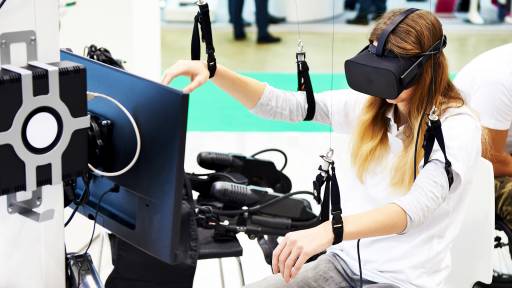What are some types of rehabilitative technologies?

Rehabilitative technologies and techniques help people recover or improve function after injury or illness. Examples include the following:
Rehabilitative technologies and techniques help people recover or improve function after injury or illness. Examples include the following:
Robotics. Specialized robots help people regain and improve function in arms or legs after a stroke.
Virtual reality. People who are recovering from an injury can retrain themselves to perform motions within a virtual environment.
Musculoskeletal modeling and simulations. These computer simulations of the human body can pinpoint underlying mechanical problems in a person with a movement-related disability. This technique can help improve assistive aids or physical therapies.
Transcranial magnetic stimulation (TMS). TMS sends magnetic impulses through the skull to stimulate the brain. This system can help people who have had a stroke recover movement and brain function.
Transcranial direct current stimulation (tDCS). In tDCS, a mild electrical current travels through the skull and stimulates the brain. This can help recover movement in patients recovering from stroke or other conditions.
Motion analysis. Motion analysis captures video of human motion with specialized computer software that analyzes the motion in detail. The technique gives health care providers a detailed picture of a person’s specific movement challenges to guide proper therapy.



